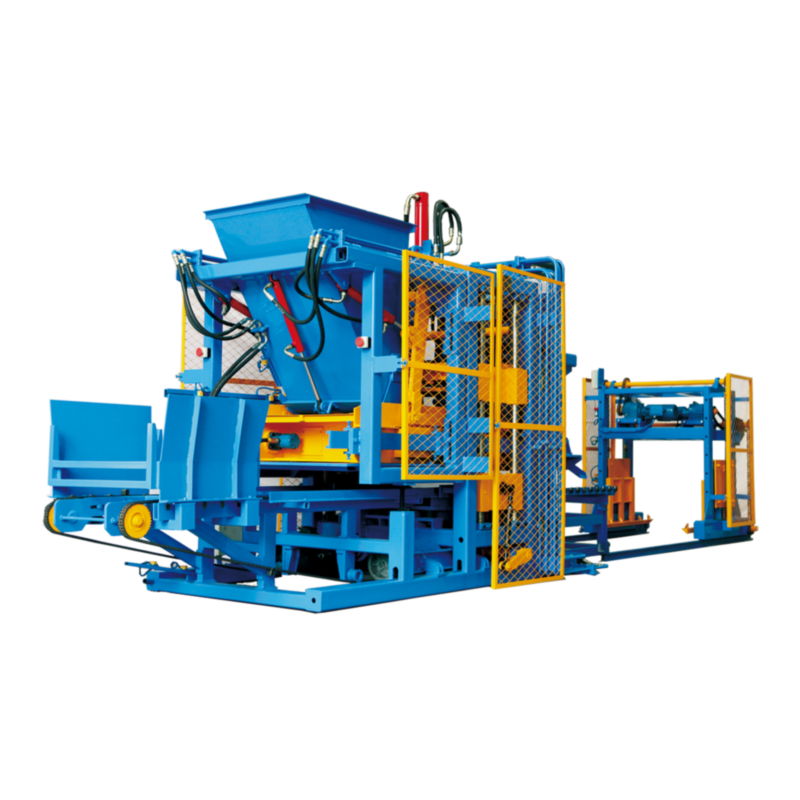The maximum output capacity of a block making machine in the USA can vary widely depending on several factors, including the specific model and configuration of the machine, the type and size of the blocks being produced, the production cycle time, and the operational efficiency of the machine.
Generally, block making machines in the USA can produce anywhere from a few hundred to several thousand blocks per day. block making machine usa Small-scale or manual block making machines may have lower output capacities, typically ranging from a few hundred to a few thousand blocks per day. In contrast, larger-scale or automated block making machines can have much higher output capacities, potentially exceeding tens of thousands of blocks per day.
It’s important to note that the maximum output capacity of a block making machine is influenced by various factors, including production speed, material handling capabilities, labor requirements, and production setup. Additionally, manufacturers may offer different models with varying output capacities to meet the needs of different customers and applications.
Therefore, to determine the maximum output capacity of a specific block making machine in the USA, it’s essential to consult the manufacturer’s specifications and technical documentation, as well as consider factors such as production efficiency, operational constraints, and market demand.
How does a block making machine ensure proper curing and drying of block?
A block making machine ensures proper curing and drying of blocks through several methods and techniques:
- Controlled Environment: Block making machines may include curing chambers or curing racks where freshly formed blocks are placed to cure. These chambers provide a controlled environment with regulated temperature, humidity, and airflow to facilitate optimal curing conditions for the blocks.
- Moisture Retention: Some block making machines incorporate moisture-retention mechanisms to prevent blocks from drying out too quickly during the curing process. This may involve covering the blocks with plastic sheeting or applying water-based curing compounds to the block surfaces to retain moisture and promote uniform curing.
- Extended Curing Time: Block making machines typically allow blocks to cure for an extended period, ranging from several hours to several days, depending on the type of blocks and curing requirements. Longer curing times ensure thorough hydration of cementitious materials and proper development of block strength and durability.
- Humidification Systems: In some cases, block making machines may feature humidification systems that introduce moisture into the curing chamber to maintain high humidity levels. Humidification helps prevent premature drying and shrinkage of blocks, reducing the risk of cracking or surface defects during curing.
- Air Circulation: Proper air circulation within the curing chamber is essential for uniform curing of blocks. Block making machines may incorporate fans or ventilation systems to ensure adequate airflow around the blocks, facilitating even distribution of heat and moisture and promoting uniform curing throughout the block stack.
- Temperature Control: Block making machines may offer temperature control features to regulate the curing temperature within the curing chamber. Maintaining an optimal temperature range promotes proper hydration of cementitious materials and accelerates the curing process, improving block strength and durability.
- Quality Monitoring: Block making machines often include quality monitoring systems to assess the progress of curing and ensure that blocks meet specified quality standards. Sensors or probes may be used to measure parameters such as block temperature, moisture content, and compressive strength, providing real-time feedback on curing progress and quality assurance.
- Post-Curing Treatment: After the initial curing period, blocks produced by block making machines may undergo additional post-curing treatments to further enhance their strength and durability. This may involve immersion in water tanks, steam curing, or exposure to high humidity environments to promote long-term durability and performance of the blocks.
Overall, a block making machine ensures proper curing and drying of blocks by providing a controlled curing environment, retaining moisture, extending curing time, maintaining humidity levels, facilitating air circulation, controlling temperature, monitoring quality, and applying post-curing treatments as needed. These measures help ensure that blocks produced by block making machines achieve the desired strength, durability, and quality characteristics required for construction applications.
